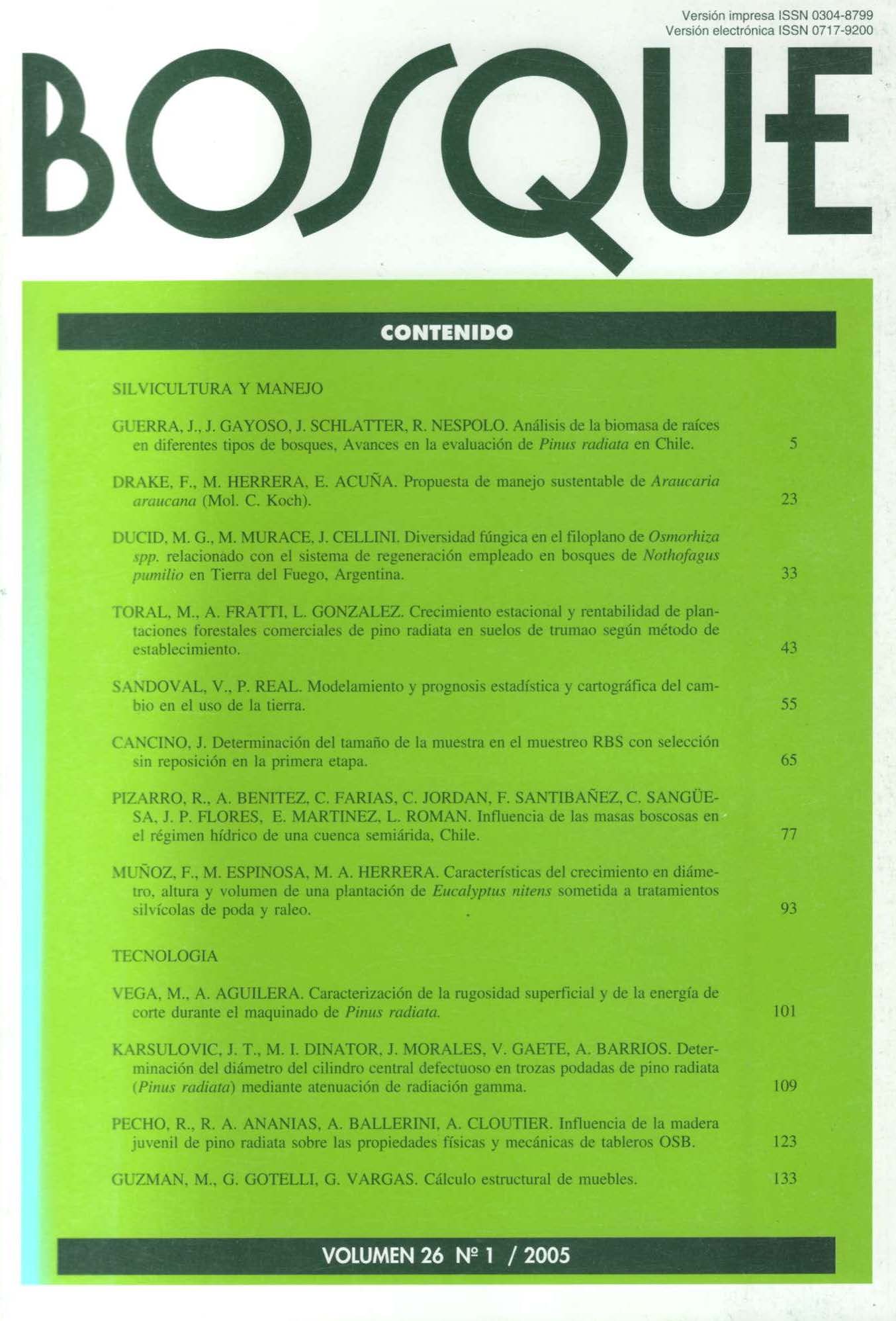Main Article Content
Apr 29, 2005
Abstract
This research, supported by FONDECYT Project # 1990680, focused on the feasibility of the gamma ray attenuation method as a means of detecting the defective core size in commercial Pinus radiata (D. Don) pruned logs. The sample consisted of two 5 m commercial logs from the same tree which came from a 24 year old planting by Bosques Arauco S.A. The system arrayed in the Laboratory of Ionic Beams in the Faculty of Sciences of the University of Chile allowed the establishment of a precise geometry for the irradiation stage, reaching close to the preferred unit value for the build-up factor. In order to have precedence records for the effect of singularities (knots) in the attenuation, a simulation of the log using round plastic containers was carried out. This also allowed a comparison of results with the main experiment. An irradiation of the logs took place in three parallel planes at three different elevations with a collection time of 220 seconds per reading. The data on the attenuation was compared with the actual locations of defects plotted through progressive transverse sectioning of the logs. Subestimations determined the defect core size to be from 0.5 to 2.9 cm in diameter. The feasibility of this method to identify the knots in commercially shaped logs was demonstrated. Nevertheless, the accuracy of this method is not optimal, owing to the time required for each radiation. However, a reduced time-span may be possible by using stronger radioactive sources as well as thinner logs.


